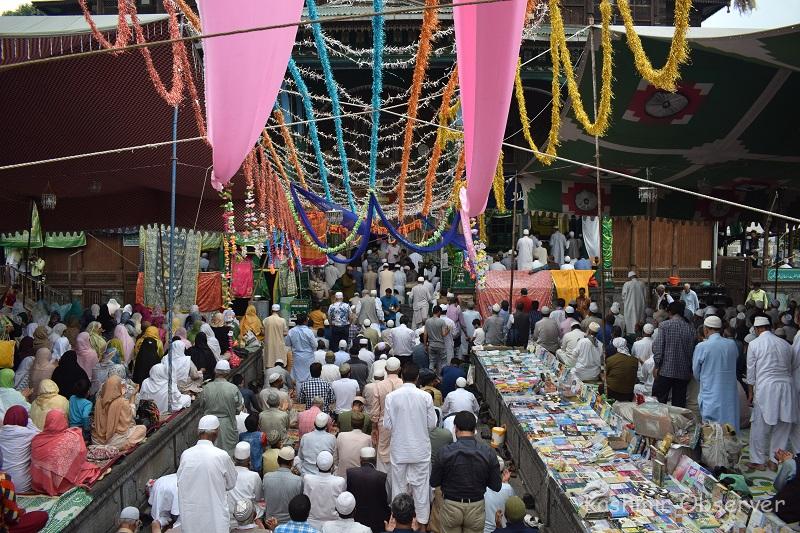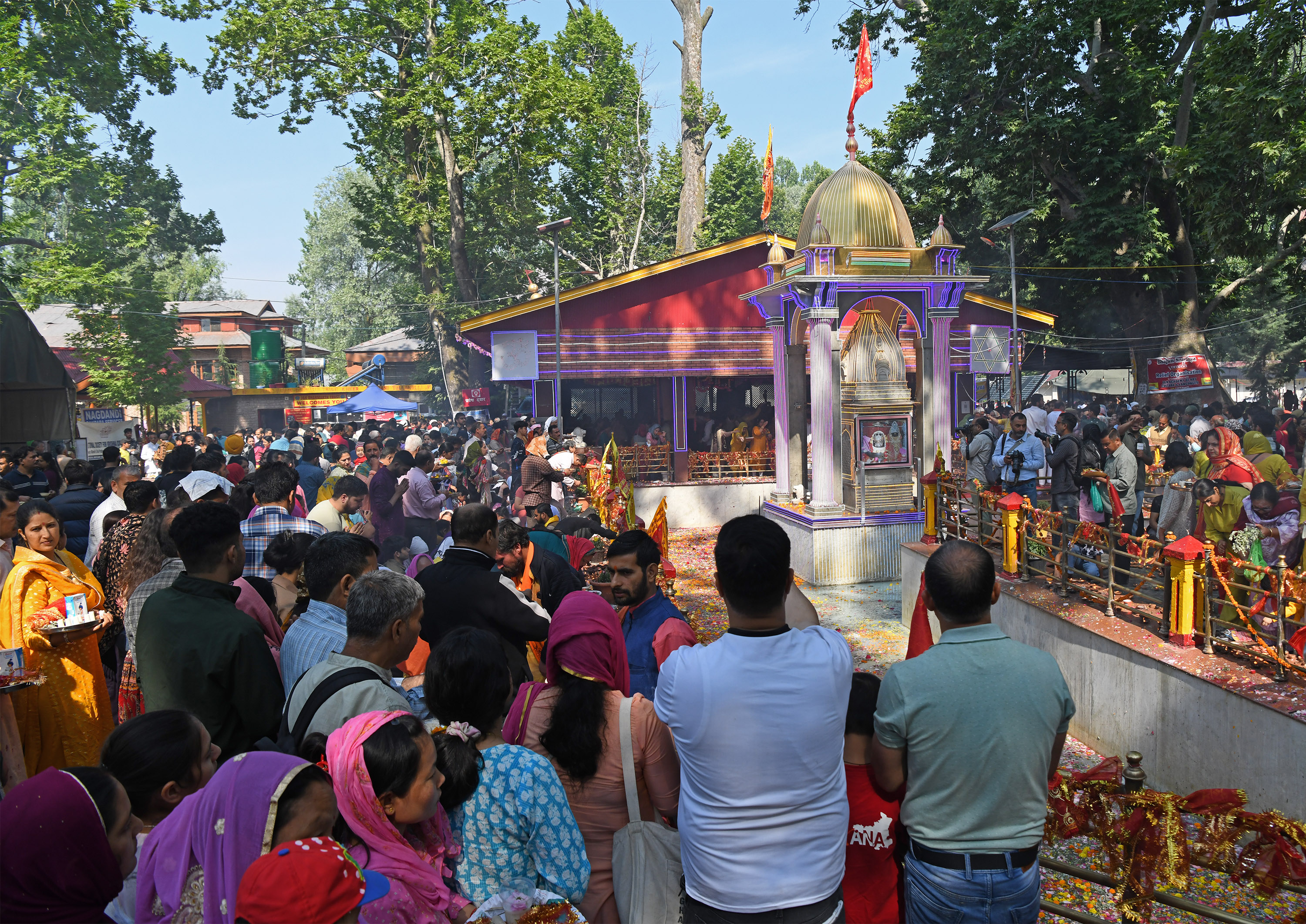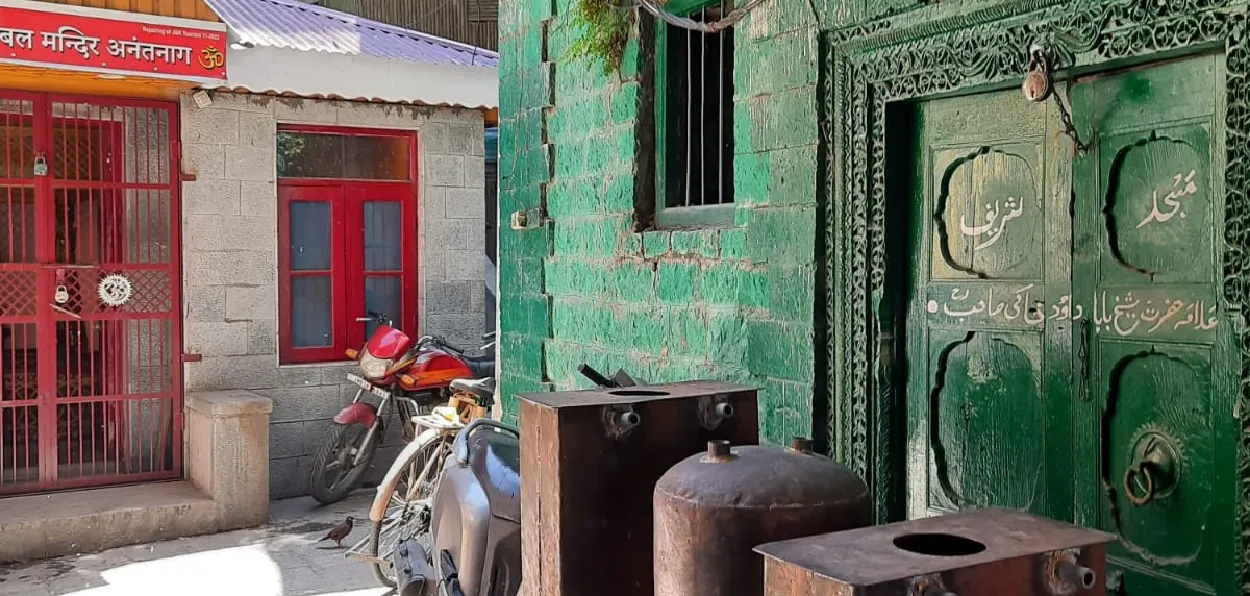Ehsan Fazili/Srinagar
As a living testimony of the religious harmony of Kashmir stands a gate at a stone’s throw away from the shrine of Sufi Saint Baba Hyder Ali Reshi in a congested lane of Anantnag, South Kashmir, that is the entrance to a mosque and a temple.
The lane from Reshi Bazar leads devotees of all faiths to the centuries-old mosque and a temple, both located 30 meters away from the Sufi shrine of Resh Moul, whose urs was recently celebrated with the entire Muslim population of the town turning vegetarian for five days.
The mosque of Sheikh Baba Dawood Khaki was founded by Shah-e-hamada during one of his visits to the town in the 14th century, corresponding to the year 990 of the Hijri calendar. Also, this is the first mosque in Anantnag.
Adjacent to it is the Prachin Devibal temple dedicated to Goddess Shakti.
Legend has it that the foundation of this mosque was laid by Mir Syed Ali Hamadani, also known as Shah-e-Hamadan in the 14th century, who came from Iran to spread Islam. Adjacent to this is the ancient Devibal temple dedicated to Goddess Shakti. As if to symbolize the divine message, both Hindus and Muslims have been passing through the same path to visit their places of worship for centuries. Devotees at the Urs of Shah-e-Hamadan in Srinagar
Devotees at the Urs of Shah-e-Hamadan in Srinagar
On June 14, Kashmir reminded the world of its traditional religious coexistence, as Muslims and Hindus peacefully celebrated their important local festivals. The Muslims celebrated the Urs of Shah-e-Hamadan and the Hindus came from far-off places to attend the annual Mela Kheer Bhawani that falls on Zyestha Ashtami at Tulmul, some 23 km from the shrine of Iranian Sufi held in esteem by both Hindus and Muslims.
While the congregation for the Urs was held at Khanqah-e-Moalla shrine in Srinagar downtown, the Mela Kheer Bhawani was held at the picturesque Chinar studded Spring shrine of Mata Kshir Bhawani. The shrine came up when the Goddess left Sri Lanka in protest against King Ravana’s abduction of Sita and settled down in Kashmir.
Some 5000 pilgrims came from different parts of the country in 176 buses for the annual festival and they also visited other shrines like Tikker (Kupwara), Devsar (Kulgam), Manzgam (Kulgam), and Logripora (Anantnag).
The annual Urs celebrations at the Khanqah-e-Moalla began with special night-long prayers late last night. Devotees in large numbers thronged the Khanqah throughout the day today offering the five-time prayers. The Urs of the founder of Islam in Kashmir is observed on the 6th Zill-Hajj, according to the Islamic calendar. Devotees at Mata Kheer Bhawani Shrine in Kashmir (Basit Zargar)
Devotees at Mata Kheer Bhawani Shrine in Kashmir (Basit Zargar)
The mosque built by Sultan Sikander in 1395 in memory of Mir Syed Ali Hamadani, was the first mosque established in Kashmir after the Sufi saint from Hamadan in Persia, spread Islam in Kashmir. It has attained a distinct significance over the past six centuries.
In Anantnag, the second floor of the mosque founded by Shah Hamadan was constructed in the 16th century by Baba Dawood Khaki, a disciple of Kashmir’s great Sufi saint, Sheikh Hamza Makhdoom.
The present upgraded structure of the mosque, known as the mosque of Hazrat Sheikh Baba Dawood-e-Khaki was developed in 1358 (Hijri).
An entrance to the mosque on the left side leads to its expansive second-floor area, where prayers (Namaaz) are offered regularly. Special prayers, Khatmaat-ul-Moazzamat are also held on all religious occasions and during the month of Ramazan.
A few shops greet the devotees in the lane leading from the main market (Reshi Bazar) road. The lane also leads to a few residential houses in its vicinity. “People from both communities have been visiting the places of worship in a traditional friendly manner”, said Ghulam Hassan, a resident.
While one enters the lane from the market side, the old Prachin Devibal Mandir greets the visitors. Though the temple is not been opened daily since the mass exodus of Hindus in the wake of the eruption of terrorism and violence in Kashmir three decades ago, it is opened on special occasions like Mahashivratri (early spring) and Jyeshth Ashtami (June).
While a large number of displaced Kashmiri Pandits come from other parts of the country and converge at the Ragnya Devi temple at Tula Mulla in Ganderbal district, many of those living in South Kashmir pay their obeisance at the Prachin Devibal temple.
Source: awazthevoice

